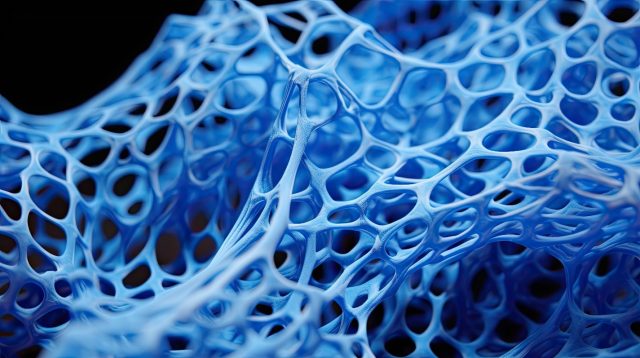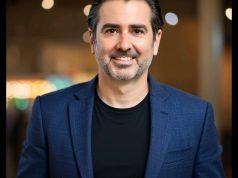In the evolving field of tissue engineering, one of the most promising developments has been the use of scaffolding materials to support and guide the growth of new tissues. These scaffolds are pivotal in the realm of regenerative medicine, offering new hope for the reconstruction and replacement of damaged organs. Bahram Alavi, President and founder of Atlas Medical Solutions and Atlas Ocular, Inc., delves into these breakthroughs such as the use of Amniotic Membrane by companies like Atlas Medical Solutions, the future of organ regeneration looks more promising than ever.
The Role of Scaffolding in Tissue Engineering
Tissue engineering is an interdisciplinary field that combines the principles of biology and engineering to develop functional replacements for damaged tissues and organs. At the heart of this approach is the scaffold, a structure that provides a supportive environment where cells can attach, grow, and form new tissue structures. These scaffolds not only support mechanical strength but also guide cells in the formation of specific tissue structures, making them crucial for successful tissue regeneration.
Bahram Alavi explains that scaffolds are designed to mimic the extracellular matrix, a complex network of proteins and other molecules that provide structural and biochemical support to surrounding cells. They are typically porous, allowing for cell infiltration and the flow of nutrients and waste products, which is critical for cell survival and growth. The materials used to make these scaffolds can range from natural substances like collagen and alginate to synthetic polymers and ceramics, each chosen for their compatibility with human tissue and their physical properties.
Applications of Scaffolding Materials
The applications of scaffolding in tissue engineering are vast and varied. In bone regeneration, for example, scaffolds are used to fill bone defects and guide the growth of new bone tissue. In cardiovascular tissue engineering, scaffolds help in the formation of heart valves and blood vessels. Even more complex organs, such as the liver and kidneys, are now being targeted for regeneration using sophisticated scaffold designs.
One of the most innovative uses of scaffolding materials is in the repair and replacement of skin and soft tissues. Bahram Alavi explains that this is particularly important in surgeries where minimal scarring is desired. Advanced biomaterials like the Amniotic Membrane are being used to create scaffolds that not only support tissue growth but also enhance healing and reduce inflammation.
Bahram Alavi and Atlas’s Innovations in Scaffolding
Bahram Alavi, President and founder of Atlas Medical Solutions and Atlas Ocular, Inc., is at the forefront of utilizing advanced biomaterials in scaffolding. Alavi’s work with the Amniotic Membrane underscores a significant innovation in the field. Derived from human placental tissue collected during scheduled cesarean sections from consenting mothers, this biomaterial has a rich history of research highlighting its healing properties. These include anti-scarring, anti-inflammatory, and enhanced healing capabilities, which are crucial in surgeries where minimal scarring and inflammation are required. “We are not just creating scaffolds; we are setting the stage for nature’s own regenerative processes to unfold,” says Atlas President and Founder Bahram Alavi. “The Amniotic Membrane, with its rich repertoire of healing factors, is a testament to the potential of natural biomaterials to revolutionize how we approach surgery and recovery.”
The effectiveness of the Amniotic Membrane as a scaffolding material has been rigorously validated by independent labs. Tests on the Apollo Amniotic Membrane Allograft, for instance, have confirmed the bioactivity of essential growth factors and cytokines that facilitate these healing processes. Bahram Alavi explains that this development not only proves the potential of such biomaterials in improving surgical outcomes but also marks ongoing advancements in the field that could revolutionize medical procedures.
The Future of Organ Regeneration
The potential of scaffolding materials in the future of organ regeneration is vast. As research progresses, there is hope that scaffold-based techniques will one day allow for the complete regeneration of complex organs from scratch. This would not only reduce the reliance on organ transplants but also eliminate issues related to donor shortages and immune rejection.
Emerging technologies such as 3D bioprinting are pushing the boundaries of what is possible with scaffolding. Bahram Alavi emphasizes that by printing scaffolds layer by layer, researchers can create more complex structures that more closely mimic the natural architecture of human tissues. This precision allows for the development of organ-specific scaffolds that could one day lead to the creation of fully functional, engineered organs.
The field of tissue engineering stands at a promising frontier, largely due to the advancements in scaffolding materials. As researchers like Bahram Alavi continue to innovate and harness the potential of biomaterials like the Amniotic Membrane, the prospect of regenerating complex organs becomes increasingly tangible. The journey from concept to clinical application is fraught with challenges, but the successes so far suggest a future where regenerative medicine could provide solutions to some of the most pressing health issues. In this future, the scaffolds not only support but fundamentally build the path toward regenerating life.








